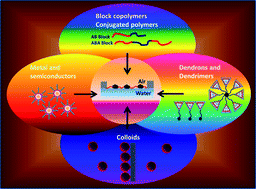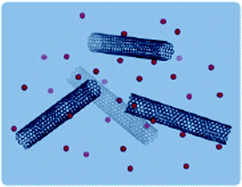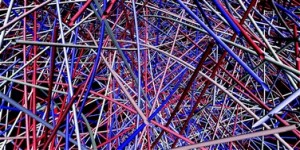This month sees the following articles in Soft Matter that are in the top ten most accessed for September:
Biomimetic soft matter
Ian W. Hamley
Soft Matter, 2011, 7, 9533-9534
DOI: 10.1039/c1sm90064a
Structural properties of soluble peptide amphiphile micelles
Amanda Trent, Rachel Marullo, Brian Lin, Matthew Black and Matthew Tirrell
Soft Matter, 2011, 7, 9572-9582
DOI: 10.1039/c1sm05862b
Light-responsive block copolymer vesicles based on a photo-softening effect
Bin Yan, Xia Tong, Patrick Ayotte and Yue Zhao
Soft Matter, 2011, 7, 10001-10009
DOI: 10.1039/c1sm06041d
A pH-responsive coiled-coil peptide hydrogel
Nicholas L. Fletcher, Christina V. Lockett and Annette F. Dexter
Soft Matter, 2011, 7, 10210-10218
DOI: 10.1039/c1sm06261a
Confined self-assembly of cylinder-forming diblock copolymers: effects of confining geometries
Bin Yu, Baohui Li, Qinghua Jin, Datong Ding and An-Chang Shi
Soft Matter, 2011, 7, 10227-10240
DOI: 10.1039/c1sm05947e
Zwitterionic surfactant/cyclodextrin hydrogel: microtubes and multiple responses
Lingxiang Jiang, Yun Yan and Jianbin Huang
Soft Matter, 2011, 7, 10417-10423
DOI: 10.1039/c1sm06100c
Preparation of stable superhydrophobic mesh with a biomimetic hierarchical structure
Taechang An, Seong J. Cho, WooSeok Choi, Jin Ho Kim, Soo Taek Lim and Geunbae Lim
Soft Matter, 2011, 7, 9867-9870
DOI: 10.1039/c1sm06238g
Mesoporous vesicles from supramolecular helical peptide as drug carrier
Sibaprasad Maity, Poulami Jana, Suman Kumar Maity and Debasish Haldar
Soft Matter, 2011, 7, 10174-10181
DOI: 10.1039/c1sm05958k
All-aqueous core-shell droplets produced in a microfluidic device
Iwona Ziemecka, Volkert van Steijn, Ger J. M. Koper, Michiel T. Kreutzer and Jan H. van Esch
Soft Matter, 2011, 7, 9878-9880
DOI: 10.1039/c1sm06517c
Phase behavior of binary mixtures of block copolymers and a non-solvent in miniemulsion droplets as single and double nanoconfinement
Roland H. Staff, Patrick Rupper, Ingo Lieberwirth, Katharina Landfester and Daniel Crespy
Soft Matter, 2011, 7, 10219-10226
DOI: 10.1039/c1sm05988b
Why not take a look at the articles today and blog your thoughts and comments below.
Fancy submitting an article to Soft Matter? Then why not submit to us today or alternatively email us your suggestions.
To keep up-to-date with all the latest research, sign up for the Soft Matter e-Alert or RSS feeds or follow Soft Matter on Twitter or Facebook.

















